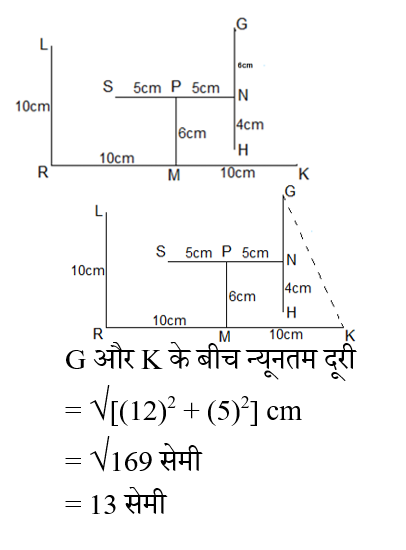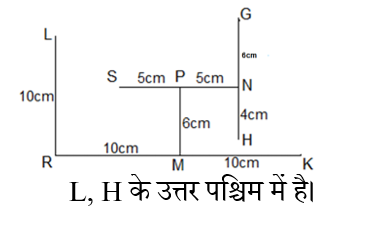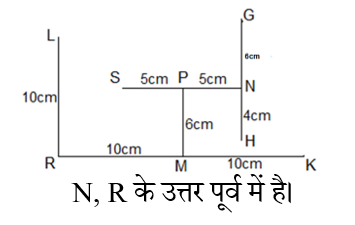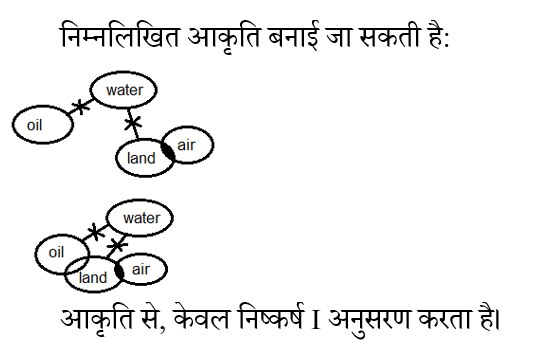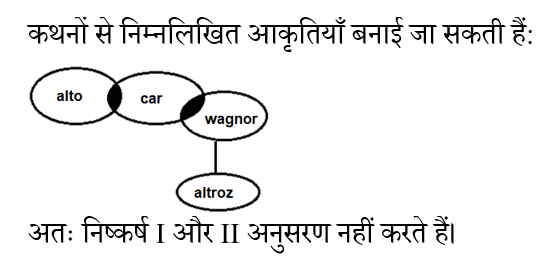Question 1:
In the question, assuming the given statements to be true, find which of the conclusion (s) among given three conclusions is /are definitely true and then give your answer accordingly.
Statements: कथन: I ≥ K > B ≥ V; N > K > O = W
Conclusions: निष्कर्ष: I. W < V II. I ≥ W
Question 2:
Which of the following symbols should replace the question marks (?) in the given expression in order to make the expressions ‘6 ≤ B’ definitely true? दिए गए समीकरण में निम्नलिखित में से किस प्रतिक को प्रश्न चिन्ह (?) से प्रतिस्थापित किया जाना चाहिए ताकि समीकरण ‘6 ≤ B’ निश्चित रूप से सत्य हो?
A>B ≥ C, 5>6 (?)D ≤ C
Question 3:
Which of the following symbols should replace the question marks (?) in the given expression in order to make the expression ‘Q ≤ T’ definitely true? दिए गए समीकरण में निम्नलिखित में से किस प्रतिक को प्रश्न चिन्ह (?) से प्रतिस्थापित करना होगा ताकि समीकरण ‘Q ≤ T’ निश्चित रूप से सत्य हो?
U > T ≥ P, S > Q (?) R ≤ P
Question 4:
How many pairs of letters are there in the word ‘RESPIRATORY’ which has as many letters between them as well as we have in the English alphabetical series from both backward and forward direction? शब्द ‘RESPIRATORY’ में दोनों आगे और पीछे की दिशा में अक्षरों के ऐसे कितने जोड़े है जिनके बीच उतने ही अक्षर हैं जितने कि अंग्रेजी वर्णमाला क्रम में होते हैं?
Question 5:
Find the odd one out. विषम का चुनाव करें।
Question 6:
निर्देश: दिए गए जानकारी के आधार पर सवालों के उत्तर दें।
Directions: Answer the questions based on the information given below:
नौ बिन्दुओ को एक कागज़ पर इस तरह बनाया जाता है कि L R के 10 सेमी उत्तर में है। K और R के ठीक मध्य में M है। K M के 10 सेमी पूर्व में है। P M के 6 सेमी उत्तर में है। S N के 10 सेमी पश्चिम में है। P S और N के ठीक मध्य में है। H G के 10 सेमी दक्षिण में है और G N के 6 सेमी उत्तर में है।
Nine points are drawn on a sheet of paper such that L is 10cm north of R. M is exactly between K and R. K is 10cm east of M. P is 6cm north of M. S is 10cm west of N. P is exactly between S and N. H is 10cm south of G, which is 6cm north of N.
What is the shortest distance between G and K? G और K के बीच की न्यूनतम दुरी कितनी है?
Question 7:
निर्देश: दिए गए जानकारी के आधार पर सवालों के उत्तर दें।
Directions: Answer the questions based on the information given below:
नौ बिन्दुओ को एक कागज़ पर इस तरह बनाया जाता है कि L R के 10 सेमी उत्तर में है। K और R के ठीक मध्य में M है। K M के 10 सेमी पूर्व में है। P M के 6 सेमी उत्तर में है। S N के 10 सेमी पश्चिम में है। P S और N के ठीक मध्य में है। H G के 10 सेमी दक्षिण में है और G N के 6 सेमी उत्तर में है।
Nine points are drawn on a sheet of paper such that L is 10cm north of R. M is exactly between K and R. K is 10cm east of M. P is 6cm north of M. S is 10cm west of N. P is exactly between S and N. H is 10cm south of G, which is 6cm north of N.
What is the direction of L with respect to H? H के सन्दर्भ में L किस दिशा में है?
Question 8:
निर्देश: दिए गए जानकारी के आधार पर सवालों के उत्तर दें।
Directions: Answer the questions based on the information given below:
नौ बिन्दुओ को एक कागज़ पर इस तरह बनाया जाता है कि L R के 10 सेमी उत्तर में है। K और R के ठीक मध्य में M है। K M के 10 सेमी पूर्व में है। P M के 6 सेमी उत्तर में है। S N के 10 सेमी पश्चिम में है। P S और N के ठीक मध्य में है। H G के 10 सेमी दक्षिण में है और G N के 6 सेमी उत्तर में है।
Nine points are drawn on a sheet of paper such that L is 10cm north of R. M is exactly between K and R. K is 10cm east of M. P is 6cm north of M. S is 10cm west of N. P is exactly between S and N. H is 10cm south of G, which is 6cm north of N.
N is to the ___ of R. N R के _____ में है।
Question 9:
निर्देश: निम्नलिखित प्रश्न में तीन कथन के बाद दो निष्कर्ष I और II दिए गए हैं। आपको दिए गए तीनों कथन को सत्य मानना है भले ही वह ज्ञात तथ्यों से भिन्न भी हो और फिर यह तय करना है कि दिए गए निष्कर्षों में से कौन सा निष्कर्ष इन कथनों का तर्कसंगत अनुसरण करता है।
Direction: In the question below there are three statements followed by two conclusions I and II. You have to take the three given statements to be true even if they seem to be at variance from commonly known facts and then decide which of the given conclusions logically follows from the three statements disregarding commonly known facts.
Statements: No oil is water कथन: कोई भी ऑयल वाटर नहीं है
None of the water is land कोई भी वाटर लैंड नहीं है
Only a few land is air केवल कुछ लैंड एयर है
Conclusions: I. Some air can never be water निष्कर्ष: I. कुछ एयर कभी भी वाटर नहीं हो सकते हैं
II. No land is oil कोई भी लैंड ऑयल नहीं है
Question 10:
निर्देश: निम्नलिखित प्रश्न में तीन कथन के बाद दो निष्कर्ष I और II दिए गए हैं। आपको दिए गए तीनों कथन को सत्य मानना है भले ही वह ज्ञात तथ्यों से भिन्न भी हो और फिर यह तय करना है कि दिए गए निष्कर्षों में से कौन सा निष्कर्ष इन कथनों का तर्कसंगत अनुसरण करता है।
Direction: In the question below there are three statements followed by two conclusions I and II. You have to take the three given statements to be true even if they seem to be at variance from commonly known facts and then decide which of the given conclusions logically follows from the three statements disregarding commonly known facts.
Statements: Only a few alto is car कथन: केवल कुछ आल्टो कार है
No altroz is wagnor कोई भी अल्टोज वैगन आर नहीं है
Only a few car is wagnor केवल कुछ कार वैगन आर है
Conclusions: I. All car being wagnor is a possibility निष्कर्ष: I. सभी कार के वैगन आर होने की संभावना है
II. All alto can be car. सभी आल्टो कार हो सकते हैं

